Cryptocoryne ciliata
Scientific name: Cryptocoryne ciliata
Family: Araceae
Maximum size reached under cultivation: 40 - 50 cm (15.75 - 19.69 inch)
014
Recommended pH range: 6.8 - 7.8
Recommended water hardness: 4 - 18°dGH (71.43 - 321.43ppm)
0°C 32°F30°C 86°F
Recommended temperature range: 23 - 28 °C (73.4 - 82.4°F)
Preferred propagation method: Runners
Native to: East Asia
Growth rate: Slow
Recommended substrate: Fine gravel
Lighting requirements: Medium
Ideal placement in tank: Background
Common Names
Mangrove Water Trumpet
Origin
Cryptocoryne ciliata is native to Southeast Asia, growing in freshwater and brackish tidal zones from India and Sri Lanka through Thailand, Malaysia, Indonesia, the Philippines, and as far as New Guinea. It thrives in mangrove swamps, slow-moving streams, and riverbanks, where it often experiences fluctuating water levels.
Growing Conditions
This species is unique among Cryptocoryne plants due to its ability to tolerate brackish water. It is well-suited for both submerged and emersed growth, adapting easily to different water levels. When submerged, its leaves are longer and more delicate, while in emersed conditions, they become thicker and more rigid.
Cryptocoryne ciliata prefers a pH range of 6.8 - 7.8 and water hardness between 4 - 18 dGH. It thrives in temperatures ranging from 23 - 28 °C (73.4 - 82.4°F). While it can grow under moderate lighting, brighter light encourages stronger, healthier growth.
Planting Area
Due to its large size (up to 50 cm / 19.69 inches), Cryptocoryne ciliata is best suited for the background of an aquarium, though in larger tanks, it can also be placed in the midground. Its long, wavy leaves create a natural, dense environment, providing shelter for fish and shrimp. It thrives in fine gravel and should not be moved frequently, as it can undergo “Crypt melt.”
Propagation
This plant reproduces via runners. The mother plant sends out horizontal shoots that develop into new plantlets, which gradually form roots. Once these plantlets are well-established, they can be separated from the runner and replanted in different locations. In emersed conditions, Cryptocoryne ciliata may also produce flowers, which are rare when grown fully submerged.
Difficulty
Cryptocoryne ciliata is classified as medium difficulty due to its slow growth rate and sensitivity to sudden environmental changes. While it is generally hardy, stability is key to its success. Frequent relocation or large fluctuations in water parameters can trigger “Crypt melt”, where the plant sheds its leaves before regrowing.
Short Description
Cryptocoryne ciliata, commonly known as the Mangrove Water Trumpet, is one of the few Cryptocoryne species that can tolerate brackish water. It is available in two varieties: Cryptocoryne ciliata var. latifolia and Cryptocoryne ciliata var. ciliata, with the latter growing larger and more vigorously. This plant is well-suited for background placement in aquariums, where its long, wavy leaves add a lush, natural feel. Given time to establish, it grows steadily and requires minimal care, making it a unique and valuable addition to freshwater and brackish tanks.

 Aglaonema commutatum “Silver Queen”
Aglaonema commutatum “Silver Queen” Aglaonema simplex
Aglaonema simplex Anubias afzelii
Anubias afzelii Anubias barteri
Anubias barteri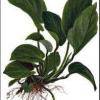 Anubias barteri “Caladiifolia” ‘1705’
Anubias barteri “Caladiifolia” ‘1705’ Anubias barteri “Coffeefolia”
Anubias barteri “Coffeefolia”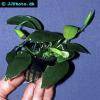 Anubias barteri “Nana”
Anubias barteri “Nana” Anubias barteri v. angustifolia
Anubias barteri v. angustifolia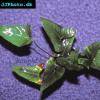 Anubias gracilis
Anubias gracilis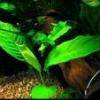 Anubias heterophylla
Anubias heterophylla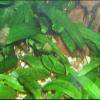 Cryptocoryne affinis
Cryptocoryne affinis Cryptocoryne albida
Cryptocoryne albida Cryptocoryne balansae
Cryptocoryne balansae Cryptocoryne becketti
Cryptocoryne becketti Cryptocoryne blassi
Cryptocoryne blassi Cryptocoryne cordata
Cryptocoryne cordata Cryptocoryne lutea
Cryptocoryne lutea Cryptocoryne nevillii
Cryptocoryne nevillii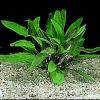 Cryptocoryne petchii
Cryptocoryne petchii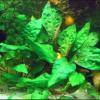 Cryptocoryne pontederiifolia
Cryptocoryne pontederiifolia Cryptocoryne wendtii
Cryptocoryne wendtii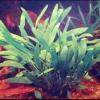 Cryptocoryne willisii
Cryptocoryne willisii Lagenandra ovata
Lagenandra ovata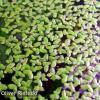 Lemna minor
Lemna minor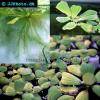 Pistia stratiotes
Pistia stratiotes Spathiphyllum petite
Spathiphyllum petite Spathiphyllum wallisii
Spathiphyllum wallisii